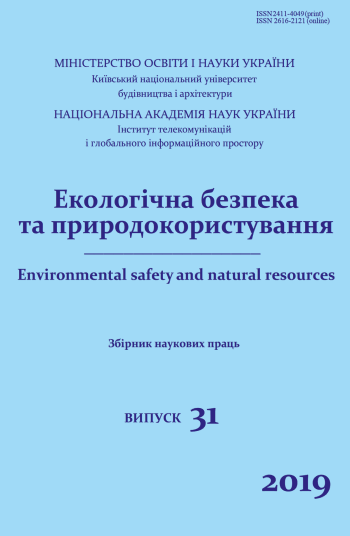Аssessment of the ecological safety level in the urban ecosystem by the atmospheric air condition
DOI:
https://doi.org/10.32347/2411-4049.2019.3.57-63Keywords:
fluctuation asymmetry, developmental stability, small-leaved linden, Tilia cordata, dendroindication, urban ecosystemAbstract
Green plantings, which are a part of the modern city, are an important element creating an environment providing favorable microclimatic and sanitary conditions for human living. Plants of the city streets, which tend to grow near the roadway, play an important role. According to the magnitude of the fluctuation asymmetry of the bilateral morphological features in plant organisms, the main environmental hazards resulting from the complex of emission, background-parametric and landscape-destructive effects associated with the formation of the urban landscape were investigated. It is proposed to determine the state of the urban ecosystem based on the of fluctuation asymmetry (FA) criteria – slight non-directional deviations between the sides of the organ, which are laid during ontogeny. The condition of the small-leaved linden (Tilia cordata) leaf plates was evaluated by the development stability, which characterizes the level of pollution in the urban ecosystem. The nature of industrial emissions into the air basin and water bodies was analyzed, as well as the level of the soil cover contamination due to the deposition of aerosol emissions in the administrative districts of Kyiv. A comprehensive approach was proposed to evaluate the status of urban ecosystems based on the combination of instrumental methods with bioindication research methods. Such a combination will make it possible to classify urban areas with the high probability, first, not by the degree of chemical pollution, but by the degree of anthropogenic changes in a whole set of environmental factors, which play a crucial role in the formation of specific properties of the urban ecosystem.References
Palmer, A., & Strobeck, C. (1992). Fluctuating asymmetry as a measure of developmental stability: implications of non-normal distributions and power of statistical tests. Acta Zool. Fenn, 191, 57−72.
Velickovi, M. (2010). Developmental stability in Tilia cordata leaves. Period Biol., 112(3), 273–281.
Shadrina, E., & Vol'pert, Y. (2015). Evaluation of Environmental Conditions in Two Cities of East Siberia. Using Bio-indication Methods (Fluctuating Asymmetry Value and Mutagenic Activity of Soils). International Journal of Biology, 7, 20–32.
Broun, L. (2002). Eco-Economy. New York: W. W. Norton&Company.
Skakalʹsʹkyy, O. (2015). Ekolohichnyy monitorynh u systemi pryrodookhoronnoyi diyalʹnosti rehionalʹnoyi vlady. Derzhavne upravlinnya ta mistseve samovryaduvannya, (4), 152−162. (in Ukrainian).
Clarke, G. (1992). Fluctuating asymmetry: a technique for measuring developmental stress of genetic and environment origin. Acta Zool Fenn, 191, 31–35.
Franiel, I. (2008). Fluctuating asymmetry of Betula pendula Roth. leaves – an index of environment quality. Biodiv. Res. Conserv., 9-10, 7−10.
Loehle, C. (2004). Challenges of ecological complexity. Ecological complexity, 1, 3−6.
Sakai, K., & Shimamoto, Y. (1965). Developmental instability in leaves and flowers of Nicotiana tabacum. Genetics, 51, 801–813.
Zakharov, V. M. (1987). Asimmetriya zhivotnykh. M.: Nauka. (In Russian).
Downloads
Published
How to Cite
Issue
Section
License
Copyright (c) 2019 Olena V. Barabash

This work is licensed under a Creative Commons Attribution 4.0 International License.
The journal «Environmental safety and natural resources» works under Creative Commons Attribution 4.0 International (CC BY 4.0).
The licensing policy is compatible with the overwhelming majority of open access and archiving policies.

